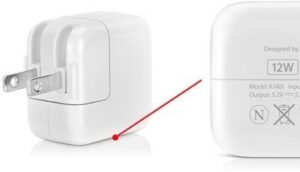Curious about the positive side of your car battery? Look no further! In this article, we’ll explore the simple solution to your query: which side of the car battery is positive? Understanding this vital piece of information is crucial for every car owner. Whether you’re a seasoned driver or a beginner, knowing the positive side will empower you to tackle various maintenance tasks effortlessly. So, let’s dive right in and demystify this common automotive question!
Which Side of Car Battery is Positive?
With the increasing popularity of electric vehicles and the reliance on advanced automotive technologies, understanding the basic workings of a car battery has become essential for every driver. One common question that often arises is: which side of the car battery is positive? In this comprehensive guide, we will explore the answer to this question, as well as delve into the science behind car batteries and the importance of understanding their polarity. So, let’s jump right in!
The Basics of Car Batteries
Car batteries are essential components that provide electrical power to start the engine and operate various electrical systems in a vehicle. They are rechargeable devices that store electrical energy in the form of chemical energy and convert it back to electricity when needed. Car batteries typically consist of a plastic housing containing a series of cells, each composed of two electrodes submerged in an electrolyte solution.
Anatomy of a Car Battery
To understand the polarity of a car battery, it’s crucial to familiarize ourselves with its anatomy. A standard car battery comprises the following key components:
1. Positive Terminal (+): The positive terminal of the car battery is typically marked with a plus sign or the letter “P”. It is connected to the positive electrode within the battery cells and serves as the point of entry for the electrical current.
2. Negative Terminal (-): The negative terminal of the car battery is usually marked with a minus sign or the letter “N”. It connects to the negative electrode within the battery cells and acts as the exit point for the electrical current.
3. Electrodes: Car batteries contain two types of electrodes – a positive electrode (usually made of lead dioxide) and a negative electrode (typically made of pure lead). These electrodes play a vital role in the chemical reactions that occur within the battery.
4. Electrolyte: The electrolyte is a mixture of sulfuric acid and distilled water that surrounds the electrodes in the battery cells. It facilitates the flow of ions between the positive and negative electrodes, allowing the battery to generate and store electrical energy.
Understanding Polarity in Car Batteries
What is Polarity?
Polarity refers to the existence of two opposite charges – positive and negative – in an electrical system. In the case of car batteries, polarity is determined by the arrangement of the positive and negative terminals and electrodes. The polarity of a car battery is fixed and essential for proper electrical flow within the vehicle’s circuitry.
The Positive Side: The Source of Power
In a car battery, the positive terminal and electrode are where the electrical current originates. When the battery is connected to a circuit, the positive terminal supplies the electrical power required for the various components to operate. This includes powering the starter motor to start the engine, operating the lights, ignition system, and other electrical accessories.
The Negative Side: Completing the Circuit
The negative terminal and electrode in a car battery act as the destination for the electrical current. Once the current flows through the circuit and performs its intended functions, it returns to the battery through the negative terminal. This completes the circuit and allows the battery to maintain a continuous flow of electrical power.
Importance of Identifying the Positive Side
Correctly identifying the positive side of a car battery is crucial for several reasons:
1. Connecting Jumper Cables: When jump-starting a vehicle, connecting the jumper cables incorrectly can result in damage to the vehicle’s electrical system. By knowing which side is positive, you can ensure a safe and effective jump-start.
2. Installing a New Battery: Proper installation of a new battery requires connecting the terminals correctly. Incorrect installation can lead to electrical malfunctions or even damage the battery itself.
3. Connecting Accessories: Many car accessories, such as audio systems or GPS devices, require connection to the battery for power. Knowing the positive side ensures a successful and safe installation.
How to Identify the Positive Side of a Car Battery?
Identifying the positive side of a car battery is relatively simple. Here are some methods you can use:
1. Visual Markings: Most car batteries have clear visual markings indicating the positive side. Look for a plus sign (+), the letter “P,” or red color near the positive terminal.
2. Labeling: In some cases, manufacturers may include labels or stickers near the battery terminals, explicitly indicating the positive (+) and negative (-) sides.
3. User Manual: If you’re unsure about the battery’s polarity, referring to the vehicle’s user manual can provide you with the necessary information.
4. Color Coding: While not always consistent, positive terminals are often colored red, distinguishing them from the black or gray negative terminals.
5. Terminal Size: In certain battery models, the positive terminal might be larger or have a unique shape compared to the negative terminal. This can help in identifying the correct polarity.
It is important to note that while the methods mentioned above are generally reliable, it’s always a good idea to consult your vehicle’s manual or seek professional assistance if you have any doubts.
Understanding the polarity of a car battery, particularly which side is positive, is essential for every driver. The positive terminal acts as the source of electrical power, while the negative terminal completes the circuit. Proper identification of the positive side is crucial for tasks like jump-starting a vehicle or installing a new battery safely. By being aware of the visual markings, labels, color coding, and terminal size, you can confidently determine the positive side of a car battery. Remember, if you’re unsure, consult your vehicle’s manual or seek assistance from a professional to ensure the correct installation and use of your car battery.
Remember, a little knowledge about your car’s battery can go a long way in ensuring smooth and trouble-free experiences on the road!
Frequently Asked Questions
Which side of a car battery is positive?
The positive side of a car battery is usually marked with a plus sign (+) or the letters “POS” or “P” on the battery itself. It is typically connected to the red cable of the car’s battery system.
How can I identify the positive side of a car battery?
To identify the positive side of a car battery, look for markings on the battery such as a plus sign (+), the letters “POS” or “P,” or a color-coded red terminal cover. Additionally, the positive cable connected to the battery is usually red.
What happens if I connect the positive cable to the negative side of the car battery?
If you accidentally connect the positive cable to the negative side of the car battery, it can lead to a short circuit. This can cause sparks, damage to electrical components, and potentially harm the battery or other parts of the car’s electrical system. It is important to ensure the correct connection to avoid these issues.
Can I reverse the polarity of a car battery?
While it is technically possible to reverse the polarity of a car battery, it is not recommended. Reversing the polarity can lead to various electrical problems and potentially damage the car’s electrical system. It is always best to connect the battery correctly from the beginning.
Why is it important to connect the positive cable to the positive terminal of the car battery?
Connecting the positive cable to the positive terminal of the car battery ensures the proper flow of electrical current through the vehicle’s electrical system. This allows the battery to provide power to various components, such as the starter motor and ignition system, enabling the car to start and function correctly.
Is it necessary to disconnect the negative cable before disconnecting the positive cable?
It is generally recommended to disconnect the negative cable first when disconnecting the battery. This reduces the risk of short circuits and helps prevent accidental electrical discharge. When reconnecting the battery, it is advised to connect the positive cable first, followed by the negative cable.
Final Thoughts
In conclusion, when it comes to determining which side of a car battery is positive, it is essential to locate the plus sign or the symbol (+) on the battery case. This indicates the positive terminal. Remember that the positive terminal is usually larger in size and may also be marked with the color red. Identifying the positive side correctly is crucial for connecting cables or accessories to the battery safely. Therefore, always double-check the markings and labels on the battery to ensure you are connecting to the correct side.



